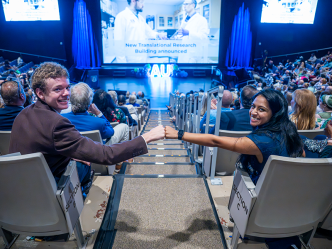Researchers at The Dental College of Georgia at Augusta University have identified a gene that may indicate if individuals are predisposed to having Sjögren’s syndrome.
Nearly 4 million Americans suffer from Sjögren’s syndrome, making it one of the most prevalent autoimmune diseases. For those with Sjögren’s syndrome, dry mouth and eyes are the first symptoms that something may be wrong, along with profound fatigue, chronic pain, cognitive impairment and other problems that can lead to disability.
“A dry mouth may seem to be more of a nuisance rather than a serious medical problem,” said Dr. Mahmood Mozaffari, one of the primary researchers. “However, a lack of adequate saliva makes it difficult to chew and swallow and makes the oral cavity susceptible to tooth decay and gum disease.”
Sjögren’s attacks the salivary and lacrimal glands that produce saliva and tears. Saliva contains properties that fight both bacteria and fungus that cause oral health issues
Sjögren’s is a systemic disease, affecting the entire body. While some people experience mild discomfort, others suffer debilitating symptoms that greatly impair their quality of life. Early diagnosis and proper treatment are important as they may prevent serious complications and greatly improve a patient’s quality of life. Unfortunately, reaching a diagnosis can be difficult and has been found to take an average of 3.5 years from the onset of symptoms, according to the Sjögren’s Syndrome Foundation.
In their research, Drs. Mozaffari and Babak Baban, studied the relevance of the Del-1 molecule in those diagnosed with Sjögren’s syndrome. They found that those with Sjögren’s have fewer of the Del-1 molecules, which typically help to reduce inflammation. Furthermore, those with Sjögren’s also have a higher than normal occurrence of the IL-17 molecule, which can cause inflammation. This imbalance may lead to the symptoms associated with tissue inflammation.
“We believe that imbalance between Del-1 and IL-17 is at the heart of the pathology of Sjögren’s syndrome,” said Baban. “We are of the opinion that the Del-1 IL-17 relationship can serve as the basis of early diagnosis as well as help target the use of effective novel therapies.”
Mozaffari and Baban have submitted a patent application for a predictive, diagnostic and prognostic kit that will address relevant and pressing issues regarding Sjögren’s syndrome.
 Augusta University
Augusta University




